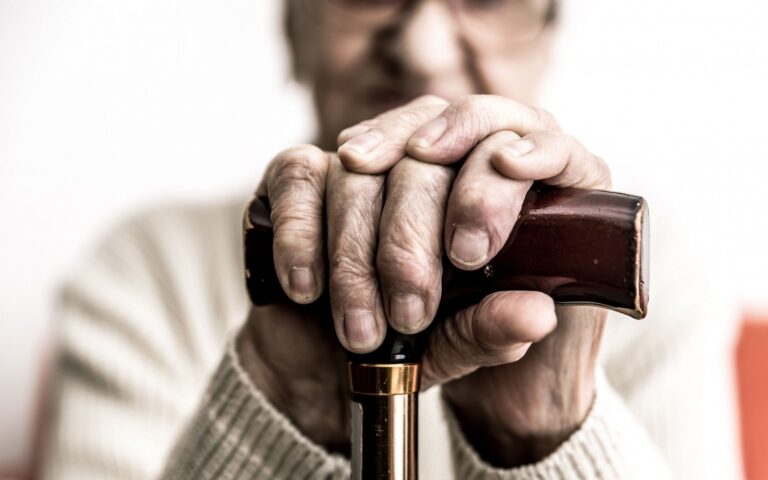As societies across the globe age, the issue of elder abuse and exploitation has become increasingly prevalent. This growing concern stems from the unique vulnerabilities that elderly individuals face, making them more susceptible to harm. Recognizing these vulnerabilities and taking proactive measures to protect them is crucial in safeguarding the well-being of this vulnerable population.
Identifying Vulnerability
The vulnerability of the elderly is multifaceted, encompassing both physical and social factors. Age-related changes, such as declining physical health, impaired cognitive abilities, and reduced mobility, can make elderly individuals more susceptible to physical harm and financial exploitation. Social isolation, often associated with aging, can further heighten vulnerability, as it limits access to support networks and reduces the likelihood of timely intervention.
Here are 10 methods of identifying vulnerabilities:
- Vulnerability scanning: Vulnerability scanning is the most common method of identifying vulnerabilities. Automated tools are used to scan systems, applications, and networks for known vulnerabilities. These tools are typically based on vulnerability databases that contain information about known weaknesses in software, operating systems, and other IT components.
- Penetration testing: Penetration testing is a more rigorous and in-depth assessment of a system’s security. It involves simulating a real-world attack, using a combination of manual and automated techniques, to identify vulnerabilities that may not be detected by vulnerability scanning. Penetration testers are typically security professionals with expertise in exploiting vulnerabilities.
- Web application security testing: Web application security testing (WAST) is a specialized type of penetration testing that focuses on identifying vulnerabilities in web applications. Web applications are a common target for attackers because they often store and process sensitive data. WAST tools are used to automate the process of identifying vulnerabilities in web applications, such as SQL injection, cross-site scripting (XSS), and broken authentication.
- Source code review: Source code review is a manual process of examining the source code of software applications to identify potential vulnerabilities. This process is often done by security professionals who have expertise in programming and security. Source code review can identify vulnerabilities that may not be detected by other methods, such as vulnerability scanning and penetration testing.
- Fuzz testing: Fuzz testing is a technique that involves feeding unexpected or malformed input to a system or application to see if it causes any unexpected behavior. This can be used to identify vulnerabilities in input validation, error handling, and other areas of the system. Fuzz testing tools are often used in conjunction with other vulnerability assessment techniques.
- Dependency scanning: Dependency scanning is used to identify vulnerabilities in the software dependencies of an application or system. This is important because many vulnerabilities are introduced through the use of third-party software components. Dependency scanning tools can identify vulnerabilities in open-source software packages, as well as proprietary software components.
- Threat intelligence: Threat intelligence is information about known and potential threats. This information can be used to identify vulnerabilities that are being actively exploited by attackers. Threat intelligence can be obtained from a variety of sources, such as security vendors, government agencies, and industry organizations.
- Vulnerability disclosure programs: Vulnerability disclosure programs are programs that allow security researchers to report vulnerabilities to organizations in a responsible manner. These programs provide security researchers with a safe and secure way to disclose vulnerabilities to organizations without fear of legal repercussions.
- Security audits: Security audits are comprehensive assessments of an organization’s security posture. These audits typically involve a review of policies, procedures, and technical controls. Security audits can identify vulnerabilities that may not be detected by other methods.
- User reporting: Users can also play a role in identifying vulnerabilities. Organizations should encourage users to report any suspicious activity or suspected vulnerabilities to their security team.
Common Forms of Exploitation
Elder abuse and exploitation manifest in various forms, often blurring the lines between individual actions and systemic issues. Financial exploitation, a prevalent form, involves the unauthorized use of an elderly individual’s money, assets, or property. This can include scams, false promises of financial gain, or outright theft. Physical abuse, another concerning form, encompasses intentional infliction of physical harm or neglect, often leading to injuries, pain, and discomfort. Emotional abuse, perhaps the most insidious form, involves the manipulation or intimidation of an elderly individual to control them or extract financial gain.
- Financial abuse is a common form of exploitation that can have a devastating impact on elderly people. It can take many forms, including:
- Forgery: This involves the perpetrator forging the elderly person’s signature on documents such as checks or contracts.
- Theft: This can be anything from stealing cash or jewelry to taking advantage of the elderly person’s poor memory to steal their identity.
- Neglect: This can include failing to provide the elderly person with food, clothing, or shelter, or failing to provide them with necessary medical care.
- Exploitation: This can include taking advantage of the elderly person’s financial resources by pressuring them to sign over property or investments, or convincing them to give them money or gifts.
- Physical abuse is another common form of exploitation that can cause both physical and emotional harm to elderly people. It can take many forms, including:
- Hitting, kicking, or shoving: This is the most obvious form of physical abuse, but it’s not the only one.
- Slapping, punching, or choking: This can cause serious injuries, including broken bones and internal bleeding.
- Sexual abuse: This is a serious form of abuse that can cause lasting emotional trauma.
- Neglect: This can include failing to provide the elderly person with food, clothing, or shelter, or failing to provide them with necessary medical care.
- Emotional abuse is another form of exploitation that can cause significant emotional distress. It can take many forms, including:
- Shouting, yelling, or cursing: This can be very intimidating and can make the elderly person feel afraid and helpless.
- Isolating the elderly person from friends and family: This can leave the elderly person feeling alone and cut off from support.
- Calling the elderly person names or making them feel worthless: This can damage the elderly person’s self-esteem and make them feel worthless.
- Threatening the elderly person: This can make the elderly person feel scared and anxious.
- Neglect is another form of exploitation that can cause significant harm to elderly people. It can take many forms, including:
- Failing to provide the elderly person with food, clothing, or shelter: This can leave the elderly person feeling hungry, cold, and homeless.
- Failing to provide the elderly person with necessary medical care: This can lead to serious health problems, including infections and injuries.
- Leaving the elderly person alone for long periods of time: This can make the elderly person feel isolated and afraid.
- Not giving the elderly person enough attention or affection: This can make the elderly person feel lonely and unloved.
The signs of exploitation can be difficult to spot, but there are a few things to look out for. If you are concerned about an elderly person, it is important to speak up and report it to the appropriate authorities.
Addressing the Root Causes
Addressing the vulnerability of the elderly requires a multi-pronged approach that tackles both individual and societal factors. Enhancing education and awareness among elderly individuals is crucial, equipping them with knowledge to recognize and avoid scams, fraud, and potential exploitation. Building strong social connections and providing access to support services can help mitigate isolation and foster a sense of belonging. Additionally, strengthening legal safeguards and ensuring proper enforcement of anti-abuse laws can deter perpetrators and protect vulnerable individuals.
Addressing the vulnerability of the elderly requires a comprehensive and multifaceted approach that involves individuals, families, communities, businesses, and governments.
Individuals and Families
- Educate older adults about safety and preventive measures. This includes teaching them about scams, fraud, and other forms of exploitation, as well as how to protect themselves online and in their homes.
- Encourage older adults to stay active and engaged in their communities. This will help them to maintain their physical and mental health, as well as reduce their risk of isolation and loneliness.
- Support older adults in maintaining their independence. This may include providing them with assistance with daily tasks, such as cooking and cleaning, or helping them to access transportation and other essential services.
- Create a network of support for older adults. This could include connecting them with friends, family members, neighbors, or volunteer organizations.
Communities
- Provide affordable housing options for older adults. This could include senior housing, assisted living facilities, and home care services.
- Make communities more accessible to older adults. This includes sidewalks, crosswalks, public transportation, and community centers that are designed for older adults.
- Support community-based programs that provide services to older adults. This could include meals on wheels, home health care, and adult day care programs.
- Promote social engagement and activities for older adults. This could include senior centers, clubs, and volunteer opportunities.
Businesses
- Provide age-friendly products and services. This includes products and services that are designed to be easy to use for older adults, such as senior-friendly menus, websites, and software applications.
- Offer training to employees on how to work with older adults. This could include training on how to communicate effectively with older adults, how to adapt products and services to meet their needs, and how to identify and report signs of abuse or neglect.
- Be supportive of older workers. This includes providing flexible work arrangements, training opportunities, and opportunities for advancement.
Governments
- Invest in programs and services that support older adults. This includes funding for housing, healthcare, transportation, and community-based programs.
- Create policies that protect older adults from abuse and neglect. This includes laws that criminalize abuse and neglect, and laws that provide support for victims of abuse.
- Educate the public about the needs and challenges of older adults. This could include public awareness campaigns, training for professionals who work with older adults, and support for community organizations that provide services to older adults.
Addressing the vulnerability of the elderly is a shared responsibility. By working together, we can create a society that is more inclusive, supportive, and equitable for all ages.
Community Engagement and Support
Communities play a pivotal role in protecting the elderly. Fostering a culture of respect and empathy for older adults can discourage exploitation and encourage bystander intervention. Establishing community support networks, such as neighborhood watch programs or volunteer-based mentorship programs, can create a sense of safety and belonging for elderly residents. Additionally, promoting intergenerational activities and fostering cross-generational bonds can foster understanding and reduce isolation.
Reporting Elder Abuse
Reporting elder abuse is a crucial step in ensuring the safety and well-being of vulnerable individuals. If you suspect that an elder is being abused or neglected, it is important to report it to the appropriate authorities. Here’s how to report elder abuse:
- Identify the signs of abuse: Before reporting, it’s important to be able to identify the signs of elder abuse. These can include physical injuries, such as bruises, cuts, or broken bones; signs of neglect, such as poor hygiene, malnutrition, or dehydration; and emotional or financial abuse, such as controlling behavior, threats of harm, or theft of money or property.
- Gather evidence: If you are able, try to gather evidence to support your suspicions. This could include photos, medical records, or witness statements.
- Choose the right reporting agency: There are a number of different agencies that can investigate reports of elder abuse. These include local law enforcement, Adult Protective Services (APS), and the National Adult Abuse Hotline (1-800-656-4673).
- Make the report: When you report elder abuse, be prepared to provide as much information as possible to the investigating agency. This could include the name of the elder, the suspected abuser, and the specific details of the abuse.
- After you have reported elder abuse, it is important to follow up with the investigating agency to ensure that the investigation is progressing and that the elder is safe.
Here are some additional resources that can help you report elder abuse:
- Eldercare Locator: https://eldercare.acl.gov/: This website provides information on how to find eldercare services in your area.
- National Council on Aging: https://www.ncoa.org/index.htm: This organization provides information on a variety of issues related to aging, including elder abuse.
- AARP: https://www.aarp.org/money/scams-fraud/info-2022/warning-signs-elder-financial-abuse.html, the American Association of Retired Persons, also has information on how to report elder abuse.
Remember, you are not alone in this. There are people who care about the well-being of older adults and want to help. If you suspect that an elder is being abused, please report it to the appropriate authorities.
Conclusion
The protection of elderly and vulnerable individuals is a shared responsibility that requires collaboration from individuals, communities, and governments. By addressing the root causes of vulnerability, enhancing awareness, and promoting proactive measures, we can safeguard the well-being of this precious segment of society.

















